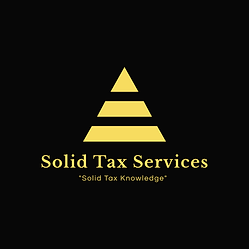Tax Free Inc. V.S. Taxable Inc.!
- Mr. Ashley Thomas, EA
- Jan 4, 2021
- 3 min read
Updated: Jan 4, 2021

Depending on the type of income you generate or receive you can have a lower tax rate or a higher one! Below I will briefly go over several forms of income, & the basic factors that effect their taxability for the tax year 2020.
*Legend for each example outlined: Tax year 2020, married filing single - MFS (the highest tax rate status), $40,000 or less annual income, & source of income stated is the only form received.
Earned income (W2 or self employed) of $40,000 or less will carry a 15.3% tax for Social Security & Medicare in addition to a 10% income tax, totaling a 25.3% tax rate. So, if you made $40,000 of annual income then your federal income tax would be $10,120 for the tax year 2020 assuming that your filing status is married filing single (See legend above). Note: Depending on your state of residence you may have additional state income tax.
Investor’s income gained from the sell or holding of stocks, options, & bonds which generally pay Self-Investors, CEO’s, Board of Directors, & Special Officers within a company are federally tax exempt if you make $40,000 or less for tax year 2020 assuming that your filing status is married filing single (See legend above). That means 0% Social Security & Medicare tax, 0% income tax, & 0% capital gains tax!
Social Security income of $40,000 or less will be tax exempt for federal income taxes purposes. That means 0% Social Security & Medicare tax, & 0% income tax since only ½ of Social Security income ($20,000) is considered when taking into account the $25,000 or more threshold for benefits to be federally taxable. Note: MFS status, $40,000 annual income or less for 2020, only source of income (See legend above).
Pension, Annuity, or Qualified Employer Retirement Plan income may have all or some portion of the amounts you receive federally taxed at ordinary income levels. If your employer only contributed to the pension or retirement plan for you (no deductions from your pay check) then it will be fully taxed for federal tax purposes. However, some states don’t tax most pension incomes like Illinois for example.
*Note: Any asset class (stocks, options, and/or bonds) that are sold on the secondary market will be taxed at ordinary long- or -short term capital gains rates, for any incurred gains. Capital gains tax rate for tax year 2020 is 0%, 15%, & 20% respectively depending on your income thresholds. The tax rate is significantly lower for passive income earners (their money works for them) compared to earned income earners (they work for their money).
Municipal Bonds generate income that is tax free at the federal, state, & local levels. However, the bond holder (buyer) must reside in the same state as the bond issuer (seller). In addition, they offer lower interest rate yields annually then other bonds, but are safer investments for investors looking to lower their taxable income for that year. Note: Lower taxable income does not necessarily mean lower income, but it means a lower tax rate which can be achieved with higher income levels!
Corporate Bonds are fully taxable at all levels… federal, state, local…, but pays the highest interest rate; nevertheless, they carry the highest risk of potential default then other bonds. Note: Bond holders are creditors, & they get paid first if a corporation is in financial difficulty & files for insolvency; unlike, stock holders who hold an equity stake in the corporation & are likely to receive no money if a corporation files bankruptcy or is insolvent.
Government Bonds generate interest income from Treasury Bills and are federally taxed, but not taxed at the state & local levels.
Solid Tax Services specializes in tax planning strategies for early income earners, retirees, as well as investors! Contact us today to begin your tax planning strategy for the year 2021, lowering your taxes!
In Trust,
Ashley Thomas, EA, CEO
P.S. Happy New Year 2021!





Comments